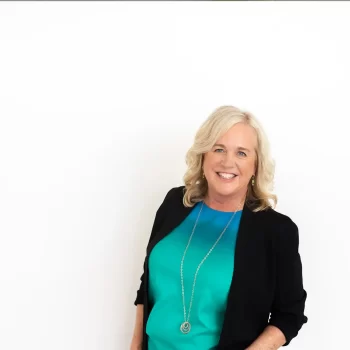Low Ticket vs. High Ticket Offers
Most established coaches, consultants and freelancers have a portfolio of products and services, meaning that they have both high-priced (high-ticket) and low-priced (low-ticket) offers.
But if you’re just starting out or you want to add a packaged offer to your 1:1 service, how do you know which is the best way to grow your business? Because both of them can get you to your revenue goal.
Here’s what I’m covering in this article. Skip to what will be most helpful to you today:
Low-Ticket Strategy
High-Ticket Strategy
Which One is Right for You?
What About Offers in the Middle?
What Kind of Offers Should I Use in My Business?
Should I Build High-Ticket or Low-Ticket First?
A Low-Ticket Strategy
Low-ticket (anything under $100) is a volume play.
- You will need lots of customers.
- With low-ticket the money comes in more slowly.
- Your audience will probably have fewer objections and hesitations when the price is lower.
- It is easier to create a self-service offer at a low price. What I mean by self-service is that you probably don’t need to have a conversation with the person to close the sale. You can put a check out form on a strong landing page and they can make the decision for themselves.
- You probably don’t need to “launch” a low-ticket offer, meaning you don’t have to do cart open and cart close and specific sales email sequences.
- In theory your low-ticket offer can run all the time. (In industry-speak this is what they mean when they talk about an “evergreen” offer.)
- People are less likely to complain if they haven’t spent a lot of money on something (but not always) and if you offer refunds, that amount shouldn’t have a huge impact on your business. (Unless you are doing tons of them, and in that case you need to be fixing your product.
- The flip side of this is you will be serving many customers and all of their technical issues etc. so again you will need to make sure your low-ticket product is super easy to use and addresses lots of questions.
A High-Ticket Strategy
High-ticket (let’s call it $3,000 and up) is a premium strategy.
- You will need to close fewer sales, but depending on the price, you may need to be directly involved in getting people to say yes.
- High-ticket will generate a cash-infusion for the business.
- You will need to meet high-expectations, but you will be doing it for a smaller group of customers
- If you have a price-conscious audience you may need to adjust your niche
- You may need to “launch” meaning that your offer is not available all the time. The time constraint can be a powerful tool in getting people to make the decision to buy from you.
- You can focus your marketing resources because your target market is smaller.
Which One is Right for You?
Let’s look at some things you might consider as you’re making the decision of which way you want to go:
Customer
If you have a price-sensitive audience and you sell to consumers (vs. businesses), you may be better off starting with a low-cost/volume-based strategy. However, there are tactics you can use, like payment plans, to make a premium offer more palatable to this type of audience.
If your audience is comfortable investing in themselves (people who pay for personal trainers or high-end vacations), they may also be comfortable paying premium prices for other personal services.
Larger businesses and organizations are often less price sensitive than consumers so if you serve this market, it often makes sense to start with a premium product. Especially because the costs of selling to a business are often higher in terms of the time it takes to find the decision maker, budget cycles, lack of flexibility on payment terms etc.
Marketing Budget
To make a volume play work, you have to get your offer in front of a LOT of people. This is difficult to do organically, meaning you will need to invest to sell your offers. But that doesn’t mean you’ll spend all your revenue on advertising. What it means is that if you have to advertise to get people to buy your first low-cost item, then you’ll likely need to sell them a few more low-cost items (or a higher-priced item) to make sure you’re making your money back.
Since you have to convince far fewer people with a premium offer, you may be able to rely more on word-of mouth, referrals, or affiliates. And a higher price means that there’s more to share with an affiliate program. However, you’ll need to build a network to connect with the people who have audiences that you’d like to access.
Access to You
If you thrive on connecting with your clients and customers, you will likely want to design a business where your core offer is about access to you. And that offer will always be premium because the key driver is the cost of your time. Almost by definition, you need to be less involved in low-cost offers because they don’t offer you the same return on your time investment.
What About Offers in the Middle?
Offers in the $500-$1500 range can be tricky for new brands or people who don’t have a large list and here’s why. On the lower end, $500 isn’t an impulse buy for most people. Someone who is willing to spend that amount without your involvement will either be directly familiar with you (heard you on a podcast, met you at a networking event, read your book) or have a strong referral to you from someone they know and trust. So that means you are likely going to need to run ads to a sales call.
And that’s where even offers at $1,500 – $2,500 become problematic. Because first you have the ad spend to get people to book the call. And then you have your time. If you look at your ideal hourly rate (and if you don’t know it I have a pricing calculator that can help you out) and the time investment required to sell at $1,500 vs the time investment to sell at $3,000 offer, they are probably pretty similar. But as you move towards the higher end, the return on your time investment becomes money that you can reinvest in ads and other visibility opportunities.
Should I Design a High-Ticket or Low-Ticket Business?
You have to start with your own definition of success. And part of that is getting real with yourself about what you like doing and what you’re willing to do (and spend) to get customers in the door. The other important piece of the puzzle is whether or not you have an existing audience of people to sell to.
The Low-Ticket Only Business
You can definitely build a business using only low-ticket offers and probably avoid getting on the phone with anyone ever. But understand that you will likely need multiple products because if you only sell one, you are not leveraging one of the most valuable assets in your business – a customer that has already paid you and had a good experience. So you’ll need to offer them ways to keep working with you. AND if you don’t already have a large list, you are definitely going to need to run ads to generate enough volume to make this model work. You will get your first sale faster this way than if you start with high-ticket, but you will need a lot of them before it feels like you’re making real money.
The High-Ticket Only Business
You can definitely build a business using only high-ticket offers. But unless you have an existing list, you’re going to need to turn on a visibility engine that gets people to know, like, and trust you to make this model work. That’s where things like lead magnets and being a podcast guest come in. People find out about you by opting into your freebie or hearing you on a podcast. Then, once you have their email, you can build your relationship with them and pitch them on your high-ticket offer. It will take longer to get you to your first sale this way, but when that sale happens you will generate significant revenue from it.
Mid-Ticket Possibilities?
If you DO have an existing list, you may be able to create and sell that elusive mid-ticket offer because you won’t have the same marketing costs as people who are trying to sell to an audience they’ve never met. However, at some point you may want to expand your audience so at that point you will likely need to make the high-ticket/low-ticket choice.
Should I Build High-Ticket or Low-Ticket First?
It really depends on the kind of business you want to build and your vision of what you want to spend your time doing in that business.
If you want to build a business with ONLY low-ticket offers:
Validate a low-ticket idea, build that product and get it out there. Figure out how to drive customers to it with ads and get it selling on auto-pilot. Once you have that, focus on another problem shared by the SAME audience. Then you can build the next offer and sell that to your existing customers with much lower marketing spend. Sarah and Justin over at Wake Up to Freedom are a great example of this model. They run ads to Mini Workshop Magic to bring people in. Then they have all these other low-ticket items they sell. (BTW – I’m not an affiliate but my Pricing Made Easy Toolkit is going to be part of their new hosted marketplace launching next week.)
If you want to build a business based on high-ticket offers:
Validate a high-ticket idea, but don’t build it right away. Just be ready to build it or deliver it (if it’s a 1:1 service for instance) when people are ready to buy. Then create a freebie or a book a call ad campaign and start building your list or having conversations. I do recommend that your first high-ticket offer be something that’s easy to deliver and where you get immediate feedback. So not an online course where you’re not interacting with the students. It might be easier to do a virtual live course or group coaching where you can build it week to week or month to month and get feedback along the way.
If you want to build a value ladder that takes people from low-ticket to high-ticket and you don’t have an audience:
Figure out how you want to make your money and validate that idea (but you don’t have to build it yet). Then create a freebie or low-ticket offer that uncovers the problem you want to solve with your high-ticket offer.
For instance:
- if your low-ticket offer or freebie is a list of deer-resistant plants, maybe your next offer is how to create a container garden
- if it’s a review of the best bread machines, maybe the next offer is how to make bread machine dinner rolls
- if it’s the best surfing wetsuits for women, maybe the next offer is a guided surfing retreat
Run ads to that low-ticket offer to get them on your email list. Market your money making offer to them.
If you want to skip freebies and low-ticket all together and you don’t have an audience:
You need to build a publicity machine that gets you the visibility and credibility that you need to sell something at a high price to people that don’t know you. Your best bet is to borrow visibility and credibility from a celebrity or a well-known and respected expert in your field. If you have a very specific target audience, you may be able to leverage industry specific media as well.
If you DO have an audience and you want to create a packaged offer:
Start by clarifying your business goal. If you want to bring more money into your business, lean towards high-ticket sold to existing customers. What kind of a premium experience could you create?
If you want more time and flexibility, think about if there’s a part of your business or expertise where if you packaged it up, your customers could serve themselves.
More Resources
Regardless of whether you’re going high-ticket or low-ticket, my FREE Ultimate Offer Design Guide has a step-by-step system that will get you from outline to online in less time.
If you’re struggling with how much to charge, either for your 1:1 work or your offers, my Pricing Made Easy Toolkit has a personalized pricing calculator that will help you decide if a high-ticket or low-ticket business is right for you.




